The Need
About 1 in 3 adults in the United States provide care to other adults as informal caregivers. Being a caregiver can cause a lot of stress due to the constant worry and the need to be available 24/7.
Some of the people receiving care are high functioning adults, who have only mild challenges in their daily lives and are often seeking to have more independence.
This issue is very personal to me because it was inspired by my own family. I saw my dad worry about his younger brother, who has an intellectual disability. My uncle is high functioning and has his own apartment, but when there is an issue, whether it is something small like a broken electronic device or something bigger like forgetting the stove on, it can cause them both an awful lot of stress.
The Idea
Creating a smart home mobile application that can help high functioning people with disabilities gain independence, while giving their caregivers the ability to help from afar without constantly worrying.
One app, two modes. Unique design for each type of user - the caregivers and the people with disabilities, and their accounts will be linked. It will provide them the platform they need in order to have independent, stress-free lives.
The application will be designed for the everyday maintenance of a household, while also providing quick solutions for emergencies.
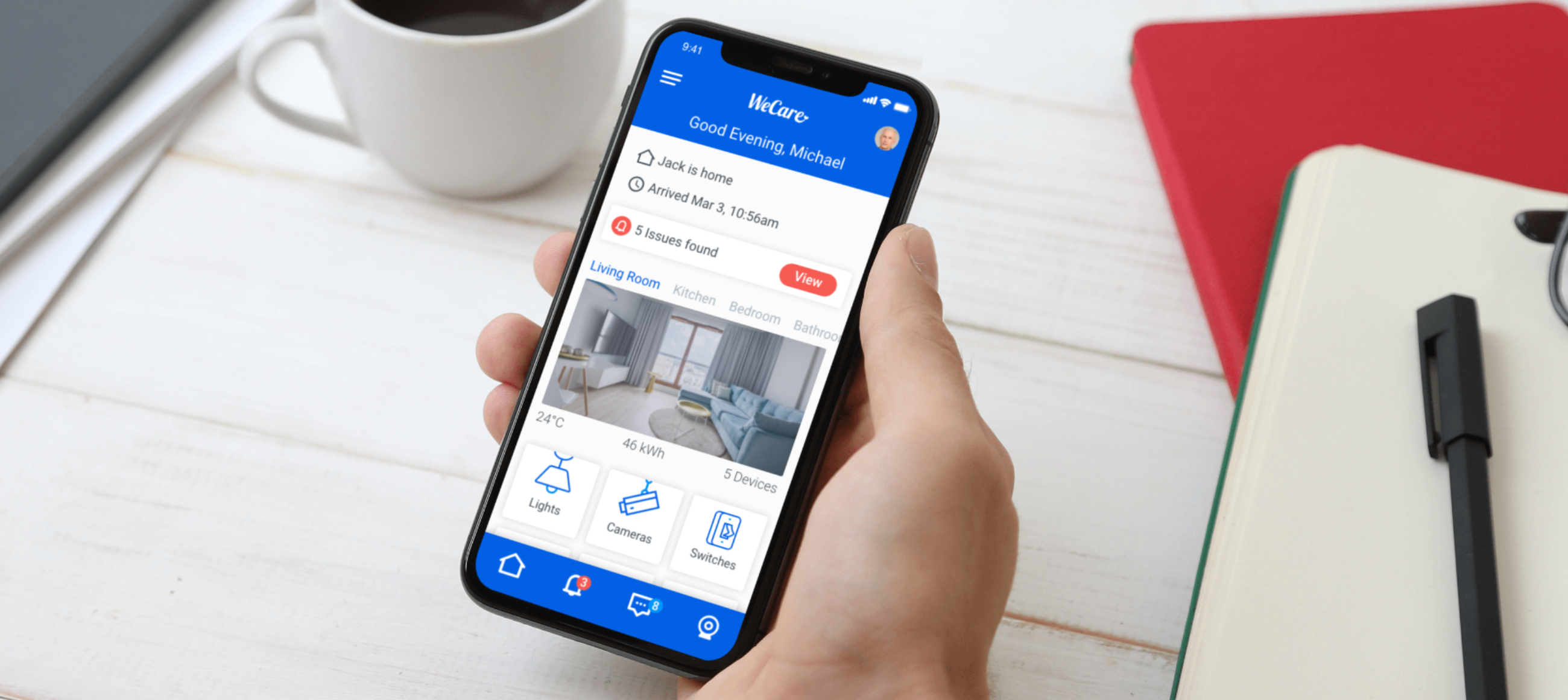
Main Research Questions
What are the responsibilities of a caregiver helping a high functioning person with disability? What worries the caregiver in the everyday routine? What are the everyday struggles and pain points for people with disabilities?
Insights from Research
...New technologies can improve communication, assist in the development of social skills, and enhance the ability to learn.
- Autism Speaks Organization
Surveys completed by parents with a child with autism before the installation of smart home systems and after using their smart home system show that the stress levels decreased by half, down from 8.27 out of 10 to 4.25.
Families with autistic kids found that a smart home system can reduce stress by helping them create a safer, and more secure environment by monitoring and having better control.
Not imagine the stress level of those parents, when their kids want to be independent and move away from home.
The term Assistive Domestics refers to assistive technology in the form of home automation which includes assistive, adaptive, and rehabilitative devices for people with disabilities.
This is not a new concept, we now see automated homes and IoT devices often used to help the elderly, and in homes where one of the family members had a disability. But no current solution offers the ability to give the caregiver control from afar, while also teaching the ones receiving the care to take care of their own home.
According to interviews, I myself conducted with caregivers and family members of high functioning adults; they all mentioned that these adults seek independence but the caregivers are concerned they won't be able to take care of themselves.
When I'm away I worry he will accidentally hurt himself because he is not always aware. I worry he will get electrocuted, forget the gas on, leave the water running and so on.
They also confirmed that they all have some technological abilities, and could benefit from a home automation system. They also talked a lot about their own stress, and the need to be able to live their own lives while taking care of those they love.
I wish I could know what the problem is from afar, to know what is going on in the apartment. She doesn't always know how to explain it herself or even what's the issue. Sometimes it's something small and she thinks it's a huge issue, and sometimes there is a big issue and she is unaware of it.
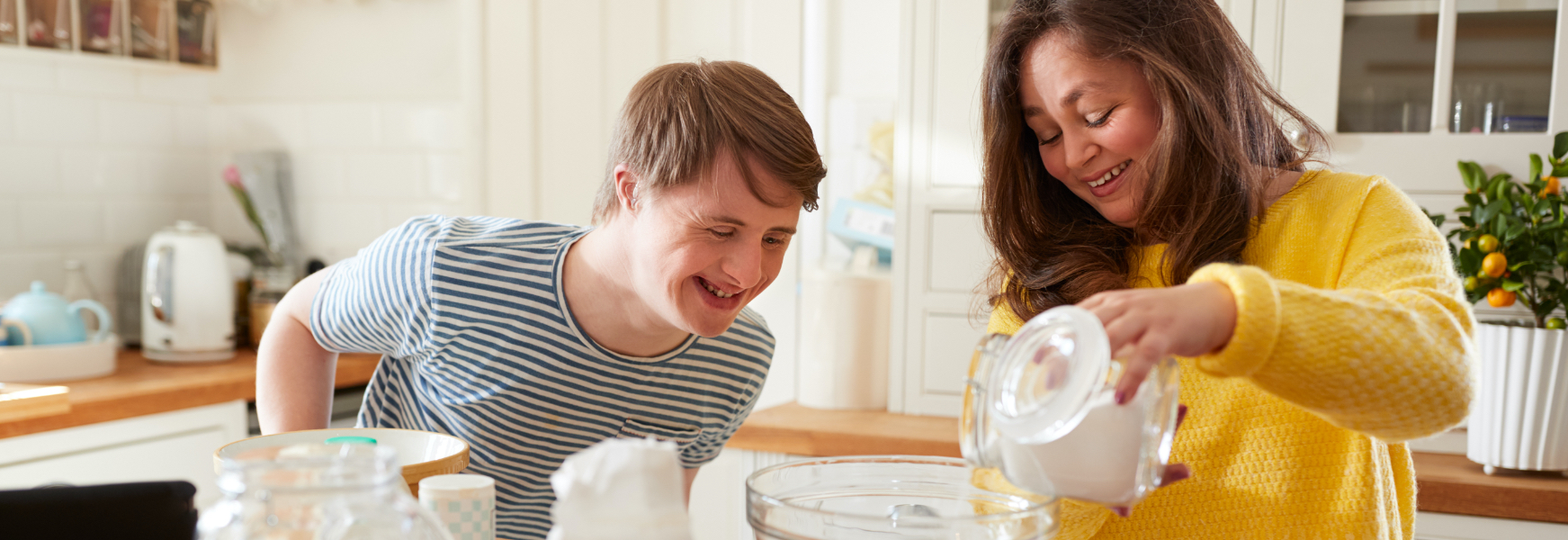
The Users
There are two different types of users in this project. The first is the caregiver who needs to be able to help from afar, get quick information and immediate notification regarding issues and emergencies. The second user is the high functioning adult, which needs a stress free and simplified platform, that will give him the ability to be independent and feel that he has control over his own life.
I created four different personas for this project, two for each type of user. The first pair consists of two brothers that live far from each other. The second pair are a mother and daughter, who lived together up till now and are now looking for a new way for the daughter to gain independence.




User journey
I created several user journeys in this project in order to understand the users, and the needs of the application better. Below are examples of two of them, one for an emergency and one for the everyday routine since this app should support the user in both situations.
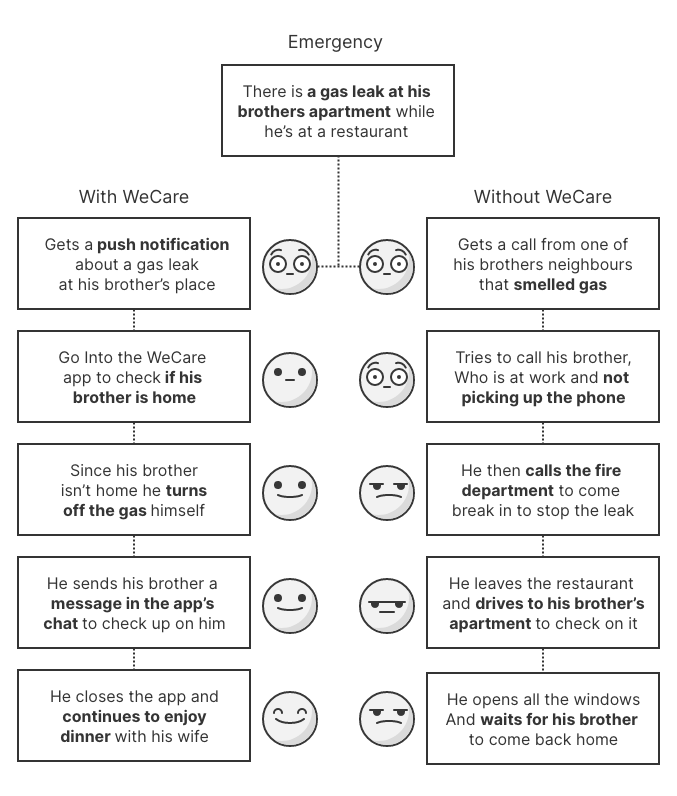
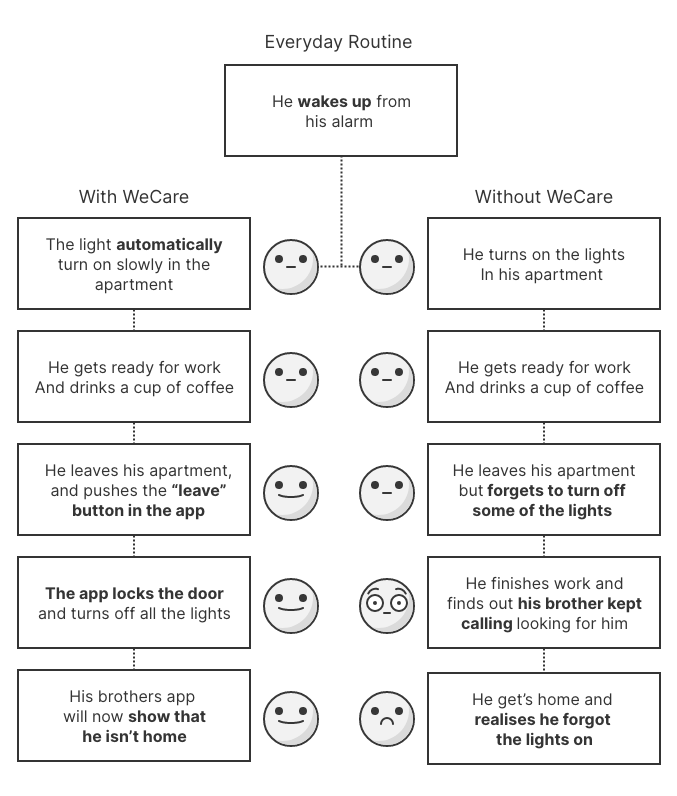
Mapping The Screens
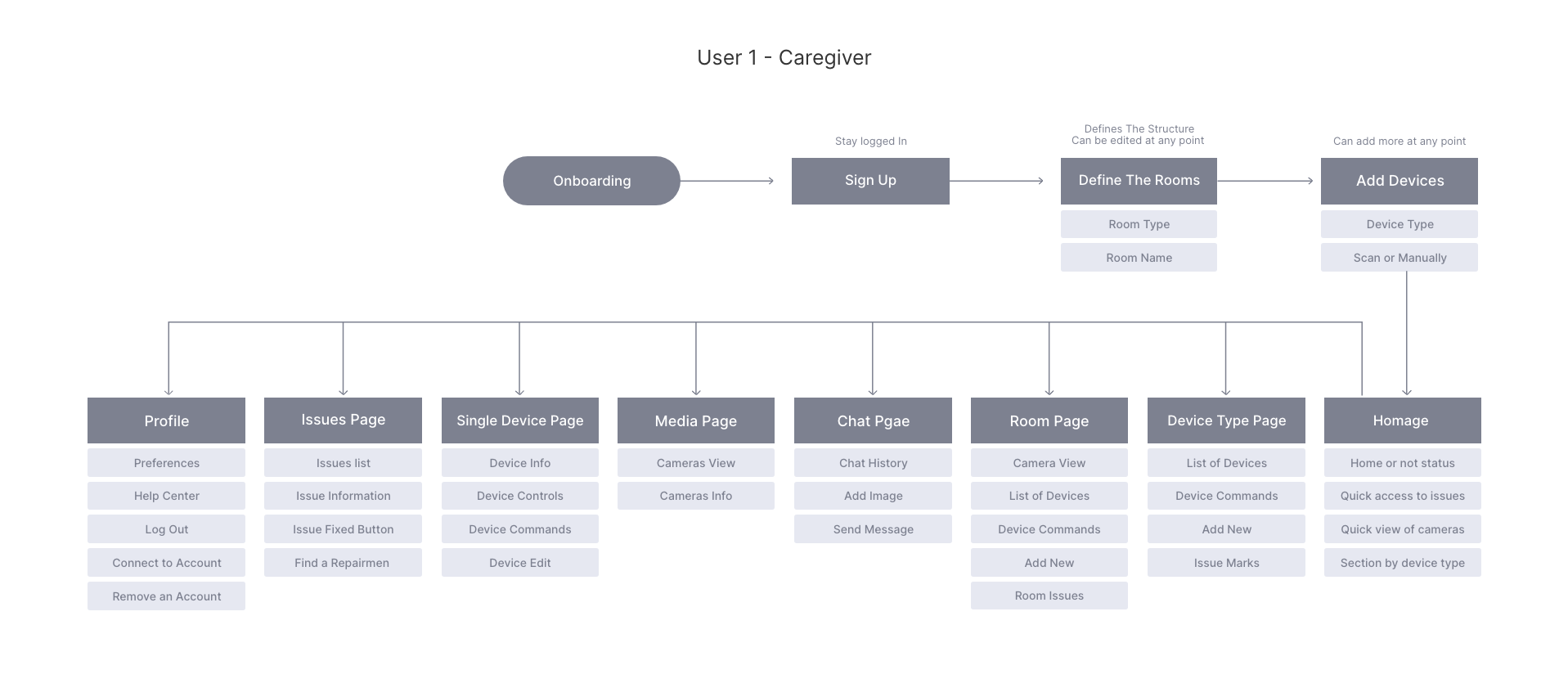
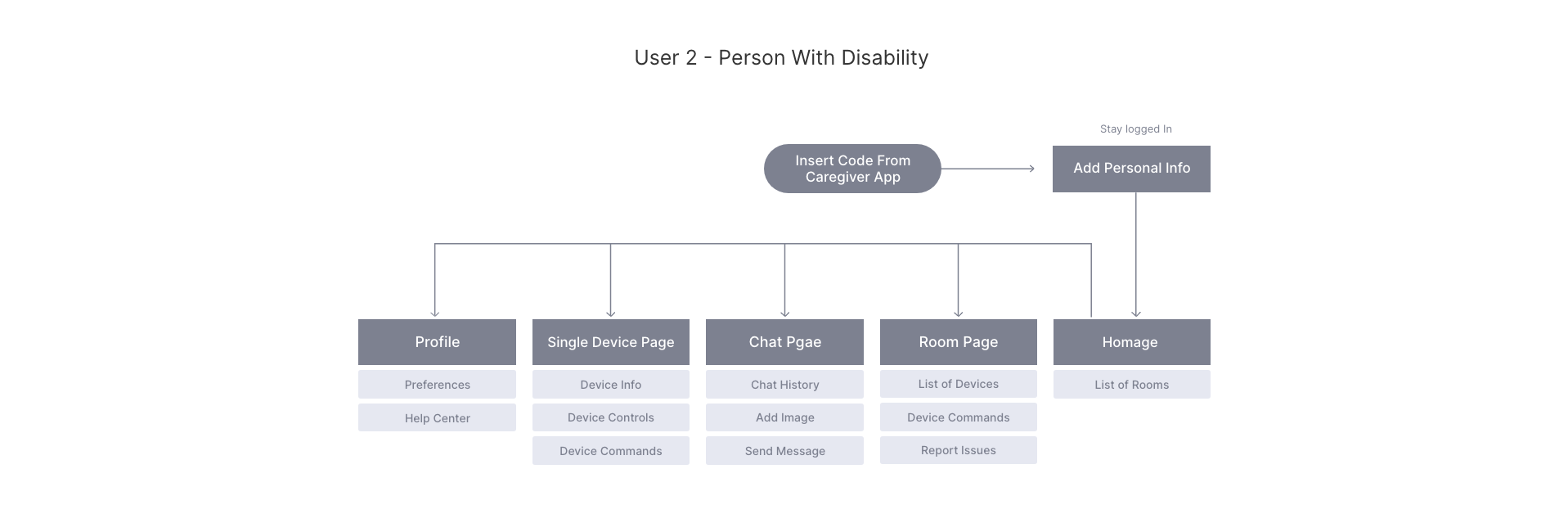
Wireframing
Since this is one app with two modes, I wanted there to be as much similarity as possible but at the same time, I wanted to make sure each structure matched the prospective user. I started the planning and wire-framing process with the caregiver in mind since this is the version with the full access that manages both accounts. When I approached the second version, the one for the disabled person, I wanted to make sure it is providing enough independence and control without being too confusing and overwhelming.
User 1 - Caregiver
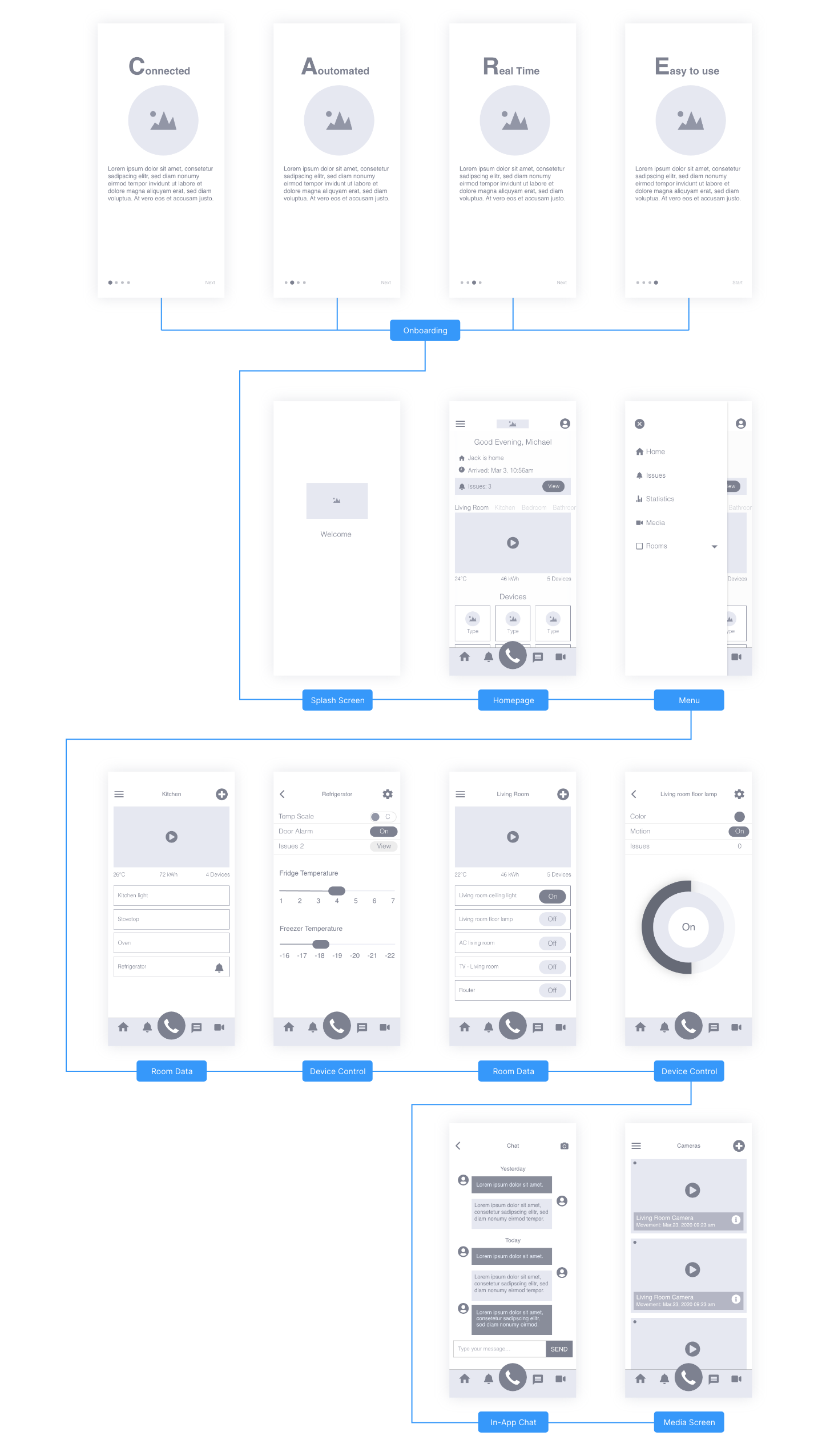
User 2 - Person with Disability
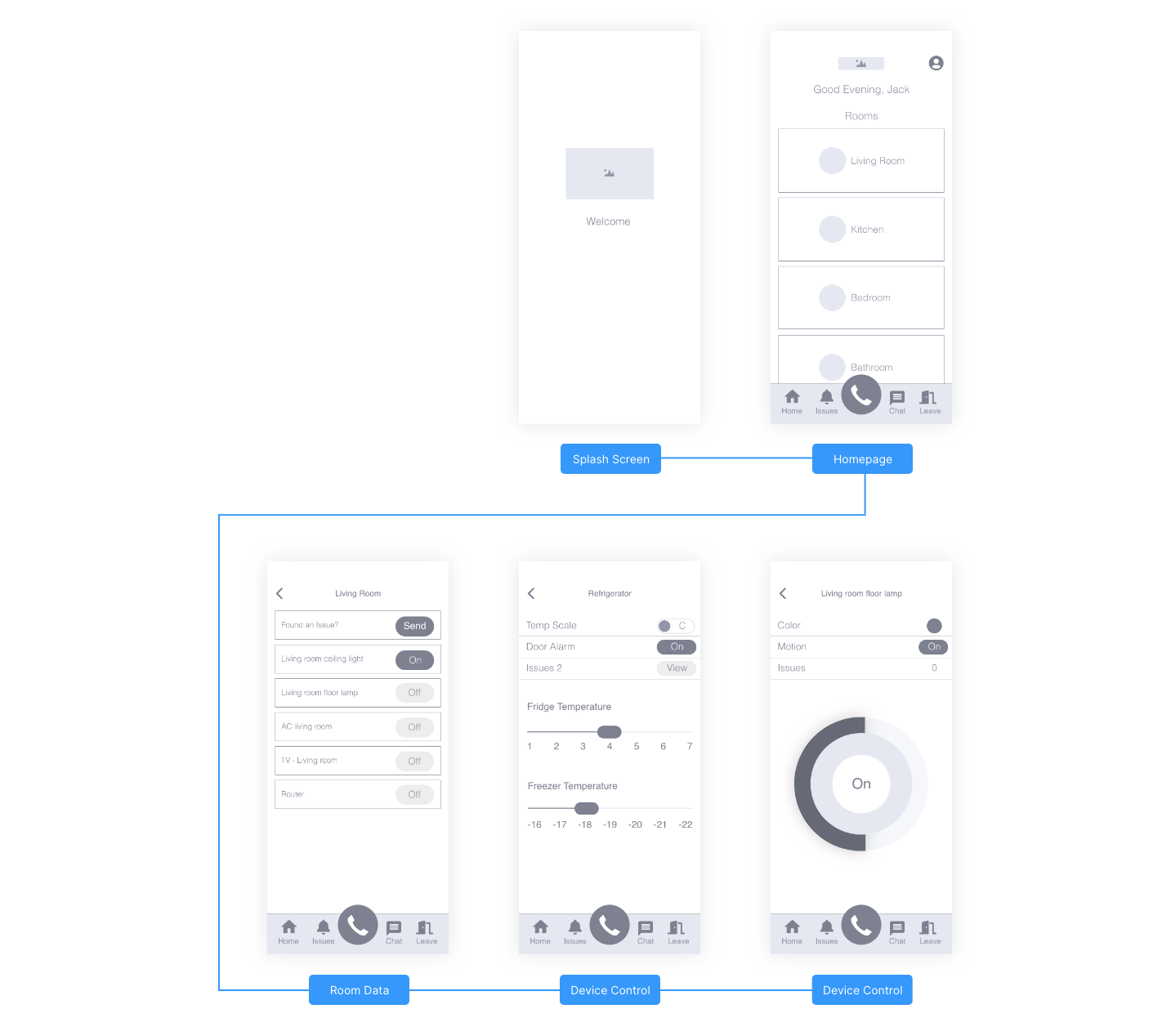
Visual Design & Branding
I wanted the design of this app to promote the following concepts: Trust, Security, and Calmness. I chose a blue color pallet, because It is the most universally liked color, and it known to slows the pulse rate and it is a calming and peaceful color. I wanted the design itself to be simple, straightforward to match the specific audience it is meant for. To create that I used familiar shapes and concepts, that is what was leading me in my choices of the icons, images, font, micro-copy, and structure.
Fonts

Color Palette
Design Tools




The Final product
Home Screens
The caregiver will be using the home screen for device management and overview. He needs a quick summary and an easy access for the issues at the home.
The person with disability needed a simpler, more direct, homepage. I found that it is easier for them to navigate the application with the rooms in mind, not devices. Their home screen lets them select the specific room they what to access, without any distractions.
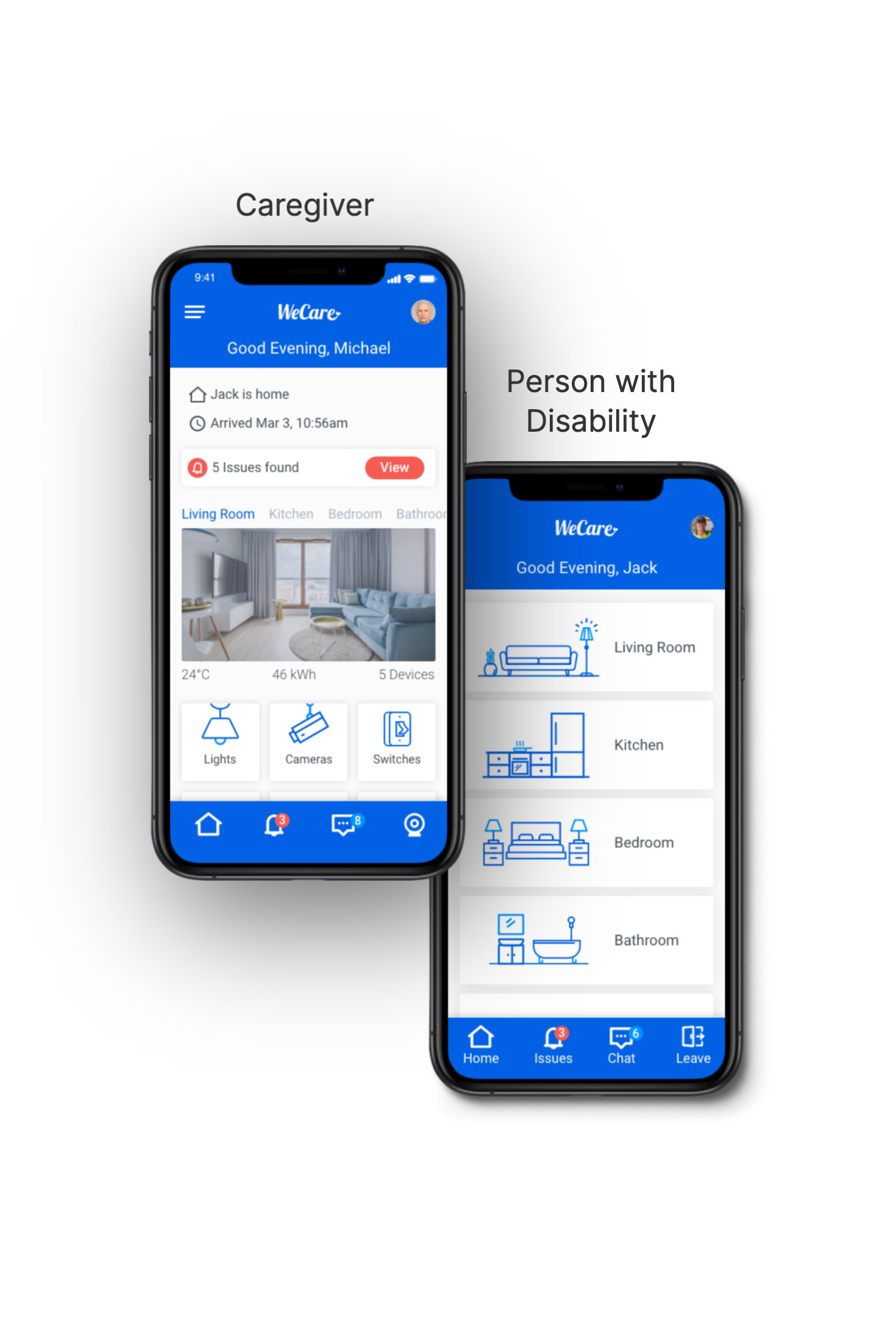
Control Smart Devices
Both users can control the smart devices using the app, but only the caregiver can edit and have more advanced options. The person with disabilities only has the controllers he will need to use in his everyday routine, it was important to keep it simple and minimal in order to make it easier for him to learn how the use the app.
I choose a more realistic design for the controllers to make it clearer and more intuitive, but also to make it more fun and playful.
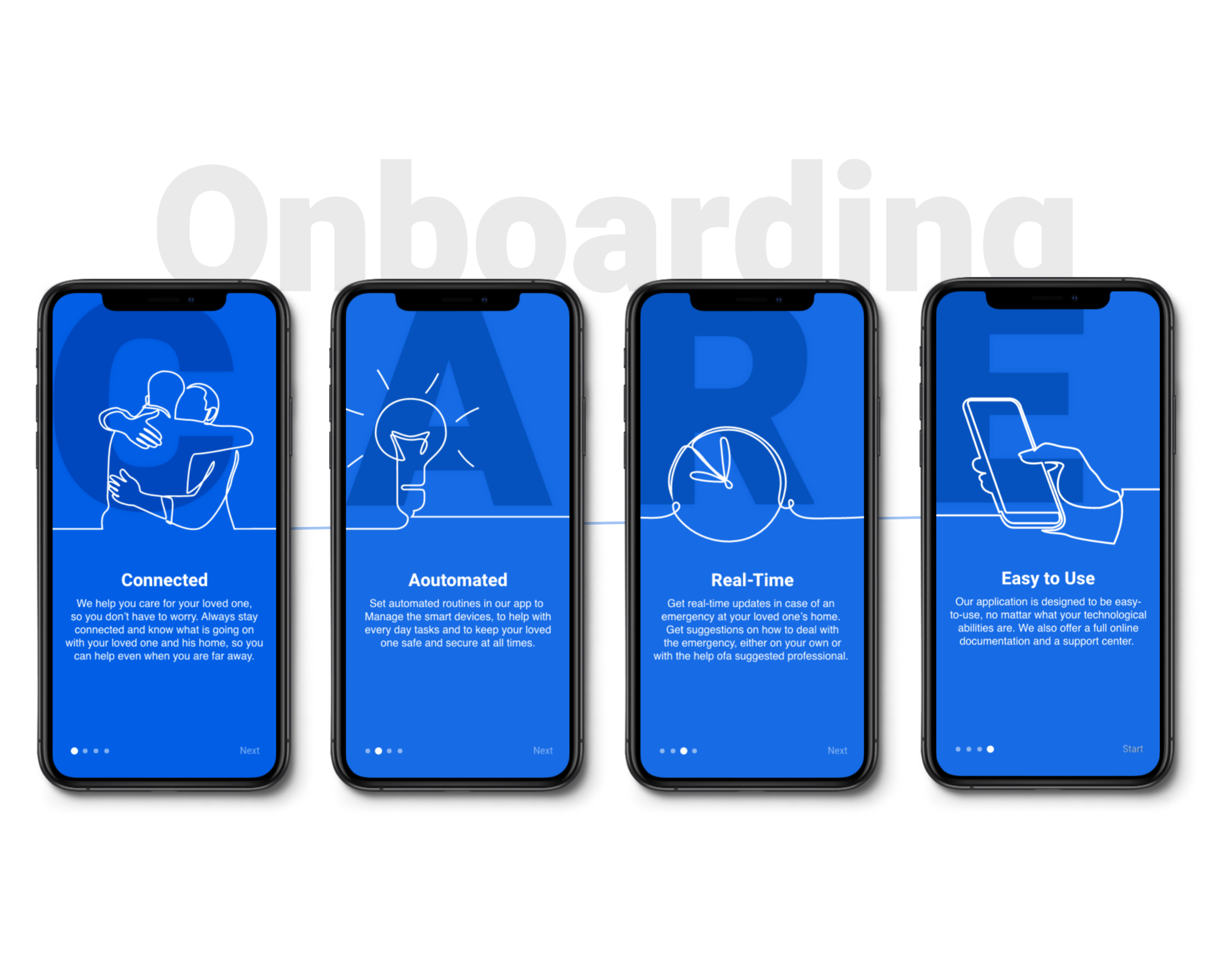
In-App Chat
It was important that the communication between the two user will be fast and organised, which is why there is an in-app chat where they can exchange information, and keep track on the issues. The design of the chat is very clean and simple.
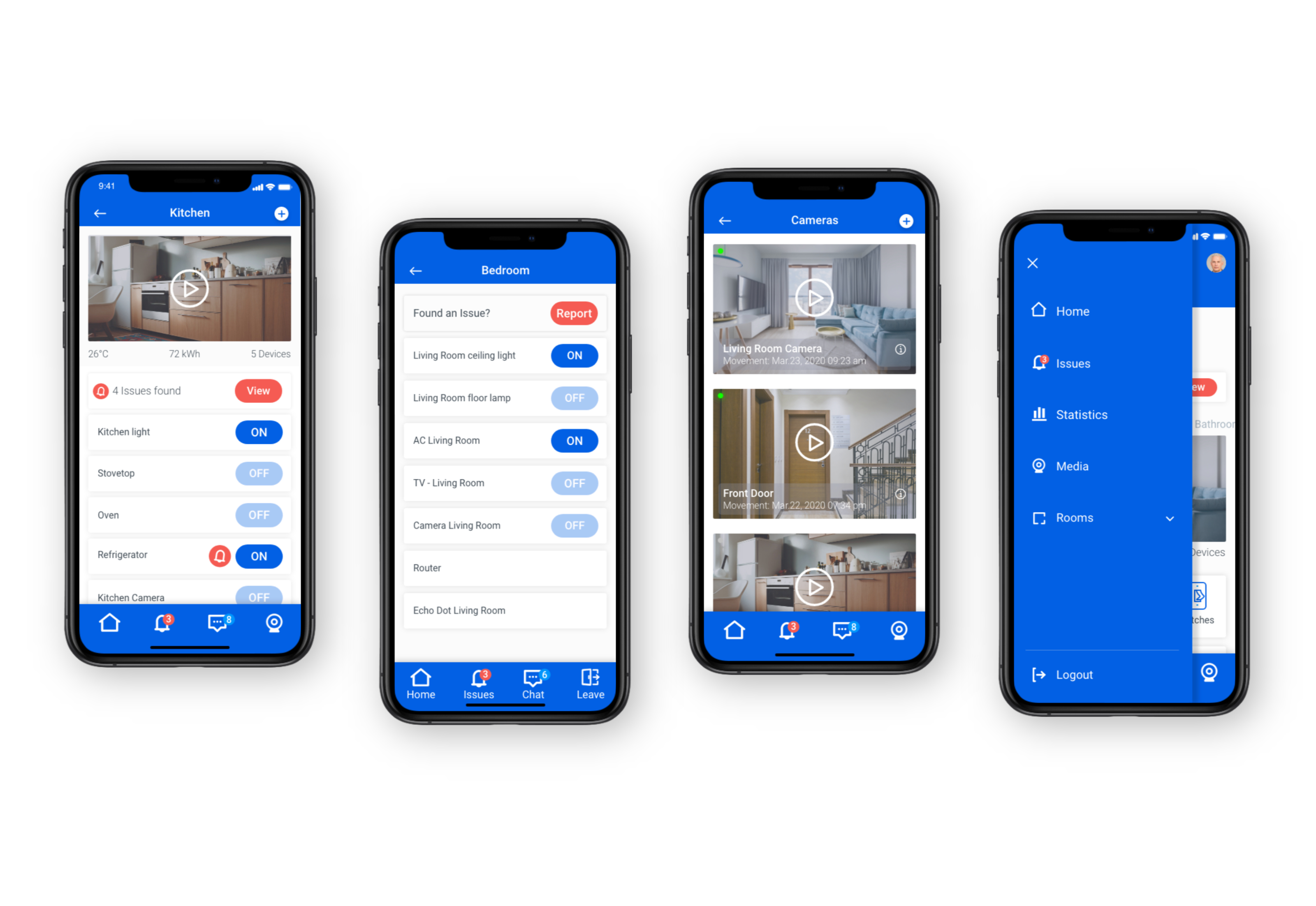
Takeaways from this project
The two biggest challenge in this project, were how to design one app for two very different users who have such different needs and abilities, and how do I even design for high-functioning people with disabilities. However, I really enjoyed these challenges, because I truly believe that this kind of product could truly help the people with disabilities and their families. I tried to balance between simplicity and giving the users lots of flexibility, but most of all I tried to balance the two users to make sure they both get the best experience without complaining on either.